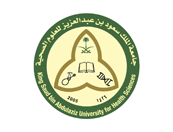Virtual Dissection: Alternative to Cadaveric Dissection for a Pregnant Nurse Anesthesia Student
Abstract
Purpose: Anatomy is a cornerstone of health professions education from which clinicians develop their clinical skills. Cadaveric dissection is considered the “gold standard”; however, the evolution of technology in recent years has produced virtual cadaver dissection. This case study describes the utilization of the Anatomage Virtual Dissection Table (AT) in a Human Anatomy for Nurse Anesthesia course by a student unable to perform cadaveric dissection due to potential health risks associated with pregnancy and formaldehyde exposure. Methods: A case study design was used to compare exam results of a student completing all dissections on the AT with her 25-student cohort completing their dissections on cadavers. The student in the AT group also provided qualitative feedback of her experience utilizing the AT. Results: The findings of this study confirm that a significant gain in knowledge occurs with both AT dissection and cadaveric dissections, without significant difference between exam scores with two dissection methods. Discussion: While educators continue to debate the most effective way to teach anatomy, this case provides a literature review, advantages and disadvantages of the different dissection modalities, and offers student perceptions related to completing all dissections on the AT. The conclusion is no single method should solely be used to teach and learn anatomy, and that student learning is more about how faculty utilize a method than about the specific method itself. © 2019 King Saud bin Abdulaziz University for Health Sciences
Recommended Citation
Washmuth, Nicholas B.; Cahoon, Terri; Tuggle, Katrina; and Hunsinger, Ronald N.
(2020)
"Virtual Dissection: Alternative to Cadaveric Dissection for a Pregnant Nurse Anesthesia Student,"
Health Professions Education: Vol. 6:
Iss.
2, Article 14.
DOI: 10.1016/j.hpe.2019.11.001
Available at:
https://hpe.researchcommons.org/journal/vol6/iss2/14



